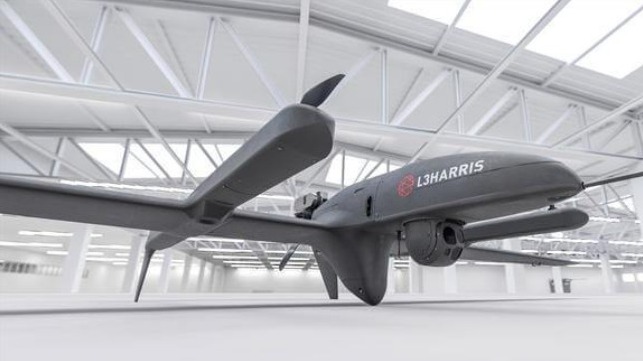Video: U.S. Navy Tests Unconventional Drone Systems

The U.S. Navy is exploring an unconventional option for a surveillance drone that can operate in "austere weather environments and multiple domains." The unusual-looking design takes off with four vertically-oriented propellers like a quadcopter, then transitions to horizontal flight with a pusher prop engine.
According to defense contractor L3Harris, the new FVR-90 design does some things that current "runway independent" drones can't do. It needs no launcher or recovery device setup, and a team of two people can move, maintain and operate it.
The hybrid design has a wide weather window, with maximum launch and recovery wind speeds of 30 knots, and it only needs a 25-foot-square area to take off and land. A tiny gas engine gives it a range of 800 miles and endurance of 12-18 hours - far more operating distance and time than the Navy's current full size vertical-takeoff drone.
“L3Harris’ FVR-90 offers unique technology not offered by other unmanned aerial systems,” said Dave Duggan, president of precision engagement systems at L3Harris. “The FVR-90 offers a vertical takeoff and landing capability that we believe can give the Navy the needed control to accomplish its important missions.”
The unit can carry a small 10-15 pound payload, enough for one multi-sensor camera and laser illuminator pod - if not perhaps enough for a full array of conventional armament.
The model is one of two selected for a three-week test in Yuma, Arizona later this year. If successful, it could transition to a prototype program and future program of record with a price tag of up to $1 billion.
The competitor, Martin UAV's V BAT, is a tail-sitting drone that takes off vertically and transitions to horizontal flight. It has already deployed with other military service branches, incuding the Marine Corps and the U.S. Coast Guard.
